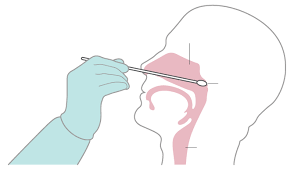“How Covid-19 Testing Works”

February 22, 2021
As the holidays come and go, there has been a pattern emerging within the last year. This pattern is the number of positive COVID-19 cases scarily rising. But with such high confirmed positive cases, all of the news isn’t necessarily bad. For example, it means these people were able to find access to testing, which is something our nation struggled with early on. If you’re like most Americans, you may be wondering about the process of confirming a positive case.
The Process Begins
To start with, the scientists need a sample to test. This sample can come from your nose or your throat. Then your sample is sent to a lab and when they get to your test, they extract the RNA from the virus, then stabilize it by putting it into its DNA form (single strand to double-strand). From there, the scientists put in primers that bind and identify the characteristics for COVID-19. This is repeated until there are a million copies of the DNA. If your sample contains the viral DNA, you get sent back a positive. If not, you are sent back a negative.
Methods of Testing
But there are other ways to test to see if you have this virus. Besides the nasal swab, (the one many dread), there’s also a blood test, a rapid antigen test, and a couple of others. The blood test is a test where they test for antibodies, as antibodies are produced and linger after an infection. This is most commonly used to see if you have been infected with COVID and not realizing, or to see if your body properly made antibodies after you knew you had COVID. The other test, which is the rapid antigen test, is when they take your sample and place it on a paper strip; one has antibodies, the other has similar antibodies to the virus, and is known as the control antibodies, and a final strip is just paper. These antibodies have detectors attached to detect any virus, When they release the sample onto the strips, the sample will be snagged and held onto by these antibodies by the first and second paper strip. This will show a positive test. If the sample is snagged by only the second paper strip, that will showcase a negative result This is a much faster way than the most common test. This is usually used to admit patients or for surgeries for the patients and other reasons.
The easiest, most avoidable way to not get these tests is to stay home, social distance, wash your hands, and wear your masks!
Sources Consulted:
https://www.fredhutch.org/en/research/diseases/coronavirus/serology-testing.html





























